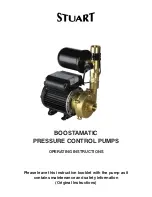
5
Cautions for units utilizing refrigerant R410A
CAUTIONS RELATED TO NEW REFRIGERANT
Use new refrigerant pipes.
If using the existing R22, be careful of the followings.
· For RP100, 125 and 140, be sure to perform replacement
operation before test run.
· Change flare nut to the one provided with this product.
Use a newly flared pipe.
· Avoid using thin pipes.
Charge refrigerant from liquid phase of gas
cylinder.
If the refrigerant is charged from gas phase, composition
change may occur in refrigerant and the efficiency will be
lowered.
Only use R410A refrigerant.
If other refrigerant (R22 etc.) is used, chlorine in refrige-
rant can cause deterioration of refrigerant oil etc.
Use a vacuum pump with a reverse flow check
valve.
Vacuum pump oil may flow back into refrigerant cycle and
that can cause deterioration of refrigerant oil etc.
Use the following tools specifically designed for
use with R410A refrigerant.
The following tools are necessary to use R410A refrigerant.
Handle tools with care.
If dirt, dust or moisture enters into refrigerant cycle, that can
cause deterioration of refrigerant oil or malfunction of com-
pressor.
Do not use a charging cylinder.
If a charging cylinder is used, the composition of refrigera-
nt will change and the efficiency will be lowered.
Flare tool
Electronic refrigerant
charging scale
Vacuum pump adaptor
Size adjustment gauge
Gauge manifold
Torque wrench
Gas leak detector
Charge hose
Tools for R410A
Contamination inside refrigerant piping can cause deterio-
ration of refrigerant oil etc.
If dirt, dust or moisture enters into refrigerant cycle, it can
cause deterioration of refrigerant oil or malfunction of com-
pressor.
If large amounts of mineral oil enters, it can cause deterio-
ration of refrigerant oil etc.
The refrigerant oil applied to flare and flange
connections must be ester oil, ether oil or
alkylbenzene oil in a small amount.
Store the piping to be used indoors during
installation, and both ends of the piping sealed
until just before brazing. (Leave elbow joints, etc.
in their packaging.)
Ventilate the room if refrigerant leaks during
operation. If refrigerant comes into contact with
a flame, poisonous gases will be released.
Make sure that the inside and outside of refrige-
rant piping is clean and it has no contaminants
such as sulfur, oxides, dirt, shaving particles, etc,
which are hazard to refrigerant cycle.
In addition, use pipes with specified thickness.
Use the specified refrigerant only.
Never use any refrigerant other than that specified.
Doing so may cause a burst, an explosion, or fire when the
unit is being used, serviced, or disposed of.
Correct refrigerant is specified in the manuals and on the
spec labels provided with our products.
We will not be held responsible for mechanical failure,
system malfunction, unit breakdown or accidents caused
by failure to follow the instructions.
Summary of Contents for EHPT20X-VM2HA
Page 11: ... See Chapter 6 10 11 6 WIRING DIAGRAM 6 1 EHST20C VM6HA ...
Page 12: ... See Chapter 6 10 12 6 2 EHST20C YM9HA ...
Page 13: ... See Chapter 6 10 13 6 3 EHST20C VM6A EHST20C VM6SA ...
Page 14: ... See Chapter 6 10 14 6 4 EHST20C YM9A ...
Page 15: ... See Chapter 6 10 15 6 5 EHPT20X VM2HA ...
Page 16: ... See Chapter 6 10 16 6 6 EHPT20X VM6HA ...
Page 17: ... See Chapter 6 10 17 6 7 EHPT20X YM9HA ...
Page 18: ... See Chapter 6 10 18 6 8 EHPT20X VM6A ...
Page 19: ... See Chapter 6 10 19 6 9 EHPT20X YM9A ...
Page 25: ...25 WATER SYSTEM DIAGRAM 8 EHST20C M HA M A EHST20C VM6SA ...
Page 26: ...26 EHPT20X VM2HA EHPT20X M HA M A ...
Page 75: ...75 ...






































